THE RISK ASSESSMENT AND REPORT TEMPLATE
Legionella Risk Assessment Calculator
Protect Your Water System & Prevent Deadly Outbreaks
Legionnaires’ disease is a severe, potentially fatal form of pneumonia caused by Legionella bacteria. Outbreaks are preventable but only if you proactively assess and manage your risks.
? Did You Know?
- Legionella thrives in warm water systems (20°C – 45°C).
- Cooling towers, hot tubs, and plumbing systems are common breeding grounds.
- 10% of cases are fatal so don’t wait for an outbreak to act.
✅ Take Control Now
Our free Legionella Risk Assessment Calculator helps you:
✔ Identify high-risk areas in your water systems
✔ Evaluate temperature, stagnation, and biofilm risks
✔ Prioritize corrective actions before it’s too late
⚠ Ignoring Legionella risks isn’t just dangerous as it’s costly. Fines, lawsuits, and reputational damage can cripple a business. Start your assessment now and stay compliant.
? Use the Calculator Below to Assess Your Risk in Minutes!
Legionella Risk Assessment Tool
Complete this form to assess the risk of Legionella in your property. A downloadable report will be generated.
🎉 Help Keep This Tool Free!
To keep this tool free and help landlords stay compliant, please share it with someone who may benefit.
🎉 Your Professional Report is Downloaded to your Device!
You just saved £150-£300 in professional consultant fees and got the same quality assessment in minutes.
📊 What you received: Is a Legally compliant risk assessment, with detailed control measures, and professional PDF documentation you can print out for your records.
Please support this free tool: Help us keep this professional-grade assessment free for all budget consious landlords and property managers.
💡 Join 500+ satisfied users who've saved thousands in professional fees
Assessment Preview
Why This Matters for Your Business
- Legal Compliance:Health & safety regulations (OSHA, HSE, WHO) require Legionella risk assessments.
- Financial Protection:A single outbreak can lead to millions in lawsuits and shutdowns.
- Reputation Management:Customers and employees trust you to keep them safe.
Don’t gamble with safety so calculate your risk now.
Need help mitigating risks? Start with our free Legionella risk assessment tool and Report generator here.

